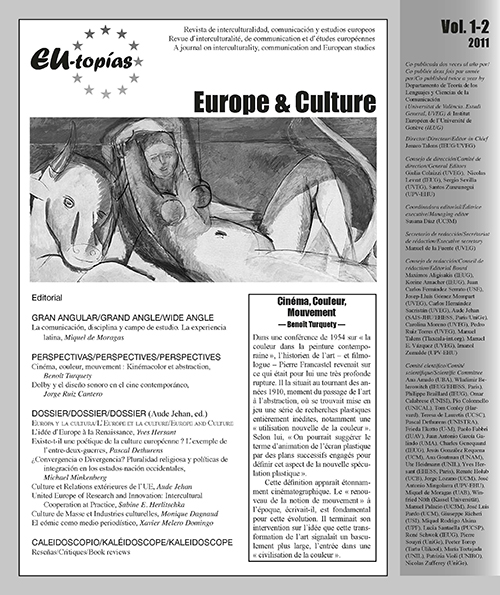The idea of ??Europe in the Renaissance
DOI:
https://doi.org/10.7203/eutopias.1.18461Keywords:
The “Renaissance”, Humanism, European awareness, Uniformism vs Diversity, Discoveries Abstract
Abstract
The word “Renaissance” designates a historical period only since the 19th Century; but it’s in the 14th Century, especially after Petrarch, when the idea of a Latin rebirth should be dated through removing it from the asperitas of Scholastic and restoring the studia humanitatis by a return to the Ancients. And even if nowadays we tend to forget it, humanism played a crucial role in the historical developpement of the notion of Europe. The humanist dream of regenerating culture and civilization gave way to a feeling of unity that was not only religious, also cultural. This article is a “panoramic journey” to the origins of both a moral and a political Europe that slowly took conscience of itself in Alterity. The analysis, at the same time literary, political and historical, flows through four main channels and reconstitutes “the birth of the idea of Europe,” from the taking of Constantinople to the great discoveries.
 Downloads
Downloads
 References
References
BRAGUE, Rémi (1992). La Voie romaine. Paris : Criterion, (rééd. Gallimard, 1999).
CHABOD, Federico (1961). « Storia dell’idea d’Europa » . Bari : Laterza; trad. fr. par Y. Hersant dans Europes, Paris, Laffont, 2000.
FAYE , Jean-Pierre (1992). L’Europe une. Paris : Gallimard.
HAY , Denys (1957). « Sur un problème de terminologie historique : “Europe” et “chrétienté” », trad. de l’anglais par N. Laming, Diogène, n° 17.
HERSANT, Yves (2000). Europes. Paris : Laffont.
LE GOFF, Jacques (1994). La Vieille Europe et la nôtre. Paris : Le Seuil.
MACHIAVEL , Nicolas (1996). « L’Art de la guerre, II, V, » trad. de Christian Bec, OEuvres. Paris : Laffont.
RICO, Francisco (2002). Le Rêve de l’humanisme, de Pétrarque à Erasme, trad. fr., Paris : Les Belles Lettres.
RIPA , Cesare (2000). Iconologia, éd. de 1603, trad. par Y. Hersant, dans Europes. Paris : Laffont.
VOLTAIRE (2005). Le Siècle de Louis XIV, 1751, Réed. par J. Hellegouar
Downloads
Published
How to Cite
-
Abstract217
-
PDF (Français )114
Issue
Section
License
![]()
The authors conserve the copyright. All content published in EU-topías. Journal of interculturality, Communication, and European Studies are subject to the license Creative Commons Attribution-NonCommercial-ShareAlike 4.0 license. The full text of the license can be found at <http://creativecommons.org/licenses/by-nc-sa/4.0>
They may be copied, used, disseminated, transmitted and publicly displayed, provided that:
- The authorship and original source of the publication is cited (journal, publisher and URL of the work).
- They are not used for commercial purposes.
- The existence and specifications of this license of use are mentioned.
It is the responsibility of the authors to obtain the necessary permissions for images that are subject to copyright.



